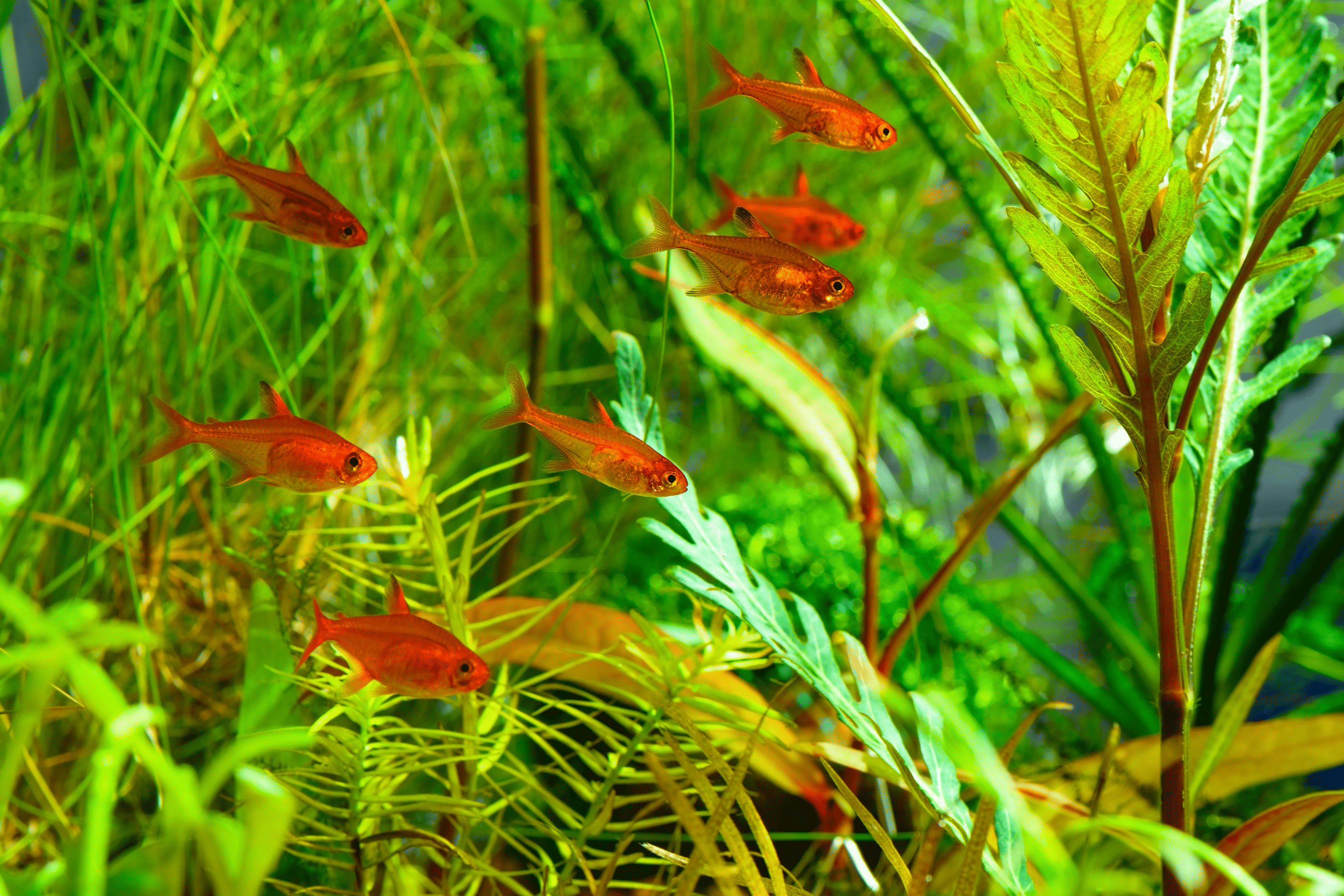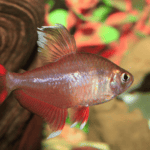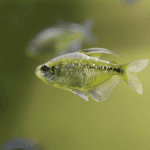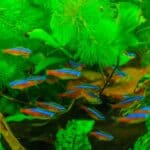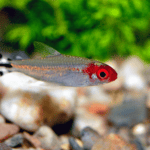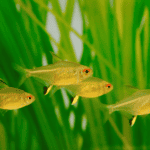The Ember Tetra, also known as the Fire Tetra, is a popular fish species among aquarium enthusiasts. With its vibrant red and orange hues, these tiny fish can add a fiery touch to any aquatic setup. They are easy to care for and require minimal maintenance, making them a perfect choice for beginner fish keepers. Ember Tetras are social creatures and thrive in groups, so it’s recommended to keep them in schools of six or more. Despite their small size, they are quite active and love to swim around and explore their surroundings. If you’re looking to add some color to your aquarium, consider the Ember Tetra – these little fireballs are sure to catch your eye and bring some life to your aquatic world. In this article, we will dive deeper into the Ember Tetra and learn more about their behavior, care, and compatibility with other fish species.
Physical characteristics and natural habitat
The Ember Tetra is a small fish that can grow up to 3 cm in length. They have a vibrant red and orange coloration that makes them stand out in any aquarium. They are native to the blackwater streams and tributaries in South America, specifically Brazil, and Peru. These streams have acidic water with a pH of around 6.0-6.5 and a temperature range of 75-82°F. The Ember Tetra is a schooling fish and is usually found in large groups in their natural habitat.
Ember Tetras have a streamlined body and a forked tail that helps them swim swiftly in the water. They have a transparent dorsal fin that is usually tinged with red. Their fins are short and rounded, and their eyes are large and black. They have small mouths and teeth that are used to grind and chew their food.
Despite their small size, Ember Tetras are quite active and love to swim around and explore their surroundings. They are peaceful and non-aggressive, making them an excellent addition to a community aquarium.
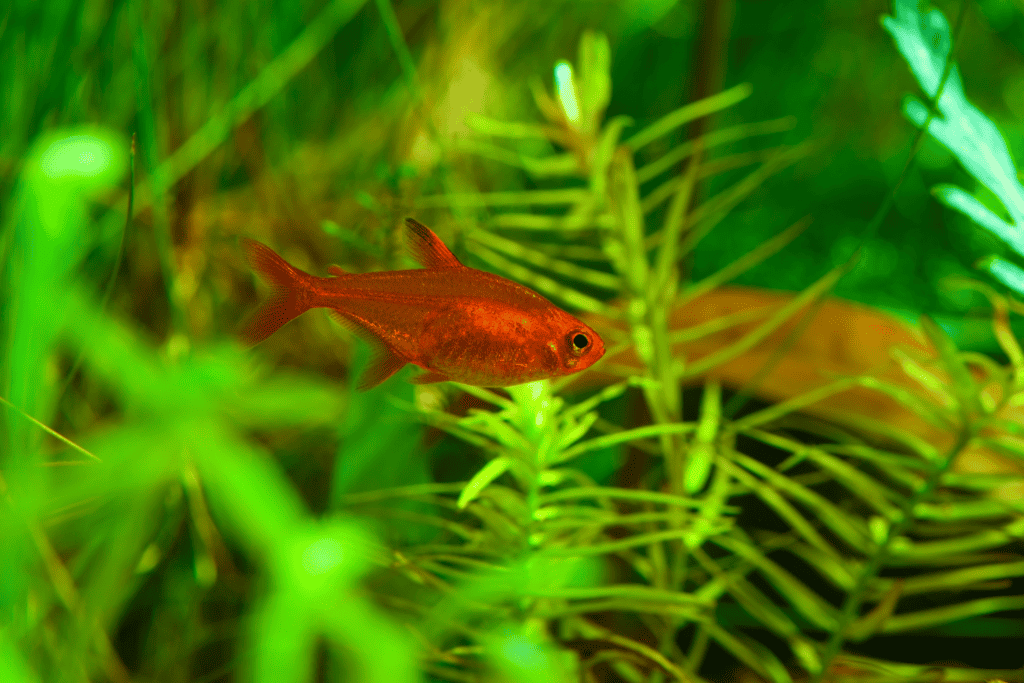
Ember Tetra care guide – tank size, water conditions, and diet
Ember Tetras are easy to care for and require minimal maintenance, making them a perfect choice for beginner fish keepers. They are hardy fish and can adapt to a wide range of water conditions. However, to ensure that they thrive, it’s essential to provide them with a suitable environment.
The minimum tank size for Ember Tetras is 10 gallons, but it’s recommended to keep them in a larger tank of at least 20 gallons. A larger tank will provide them with more swimming space and a more stable environment. The tank should be planted with live plants, driftwood, and rocks to mimic their natural habitat. The substrate should be fine-grained, and the water should be soft and acidic with a pH of 6.0-6.5 and a temperature range of 75-82°F.
Ember Tetras are omnivores and will eat a variety of foods. Their diet should consist of high-quality flake and pellet foods, supplemented with frozen or live foods such as brine shrimp, daphnia, and bloodworms. It’s essential to feed them small amounts of food several times a day rather than one large meal to prevent overfeeding and maintain water quality.
Breeding Ember Tetras – tips and tricks
Breeding Ember Tetras is relatively easy, and they are prolific breeders. To encourage breeding, it’s recommended to keep them in a school of six or more and provide them with a suitable environment. The water temperature should be raised to 82-84°F, and the pH should be slightly more acidic, around 5.5-6.0. A breeding tank of at least 10 gallons should be set up with fine-leaved plants such as java moss or spawning mops.
Ember Tetras are egg scatterers, meaning that they lay their eggs among the plants or substrate. The female will lay around 100-200 eggs, and the male will fertilize them. The eggs will hatch after 24-36 hours, and the fry will become free-swimming after five days. The fry should be fed infusoria or baby brine shrimp until they are large enough to eat crushed flake food.
Ember Tetra tank mates – compatibility with other fish species
Ember Tetras are peaceful and non-aggressive, making them an excellent addition to a community aquarium. They are social fish and thrive in groups, so it’s recommended to keep them in schools of six or more. However, when choosing tank mates, it’s essential to consider their size and temperament to prevent aggression and stress.
Suitable tank mates for Ember Tetras include other peaceful and small fish such as neon tetras, guppies, and rasboras. Avoid keeping them with larger or aggressive fish such as cichlids or bettas, as they may bully or attack the Ember Tetras.
Common health issues and how to prevent them
Ember Tetras are hardy fish and are relatively resistant to diseases. However, like all fish, they are susceptible to certain health issues. The most common health issues that affect Ember Tetras are ich, fin rot, and velvet disease.
To prevent these health issues, it’s essential to maintain good water quality by performing regular water changes, keeping the tank clean, and avoiding overfeeding. It’s also crucial to quarantine new fish before introducing them to the aquarium to prevent the spread of diseases. If you notice any signs of illness, such as lethargy, loss of appetite, or discoloration, it’s essential to seek treatment as soon as possible.
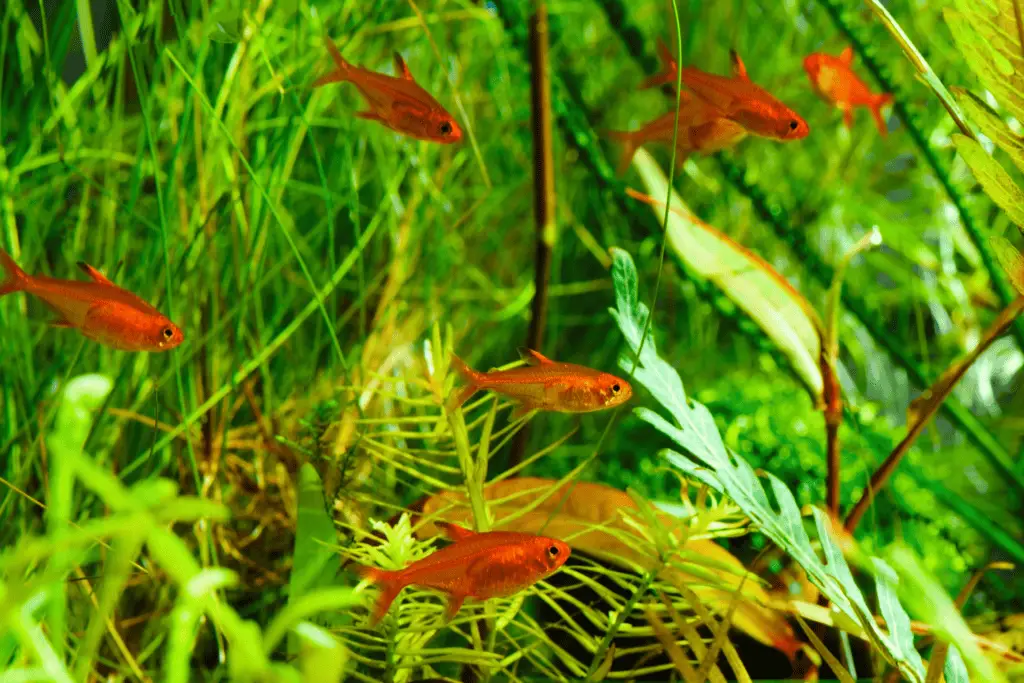
Tips for creating a visually appealing aquarium with Ember Tetras
Ember Tetras are beautiful and vibrant fish that can add a fiery touch to any aquarium. To create a visually appealing aquarium with Ember Tetras, it’s essential to consider their natural habitat and provide them with a suitable environment. A planted tank with driftwood and rocks will mimic their natural habitat and provide them with hiding places and swimming spaces.
To enhance their coloration, it’s recommended to use a black substrate, which will make their red and orange hues stand out. Lighting is also essential, and it’s recommended to use low to moderate lighting to prevent algae growth and promote plant growth.
Frequently asked questions about Ember Tetras
Q: How many Ember Tetras should I keep in my aquarium?
A: Ember Tetras are social fish and thrive in groups, so it’s recommended to keep them in schools of six or more.
Q: Can Ember Tetras be kept with other fish species?
A: Yes, Ember Tetras are peaceful and non-aggressive, making them an excellent addition to a community aquarium. Suitable tank mates include other peaceful and small fish such as neon tetras, guppies, and rasboras.
Q: What should I feed my Ember Tetras?
A: Ember Tetras are omnivores and will eat a variety of foods. Their diet should consist of high-quality flake and pellet foods, supplemented with frozen or live foods such as brine shrimp, daphnia, and bloodworms.
Conclusion – why Ember Tetras are a great addition to any aquarium
Ember Tetras are a beautiful and vibrant species of fish that can add a fiery touch to any aquarium. They are easy to care for and require minimal maintenance, making them a perfect choice for beginner fish keepers. They are social creatures and thrive in groups, making them an excellent addition to any community aquarium. With their vibrant red and orange coloration and active behavior, Ember Tetras are sure to catch your eye and bring some life to your aquatic world.
